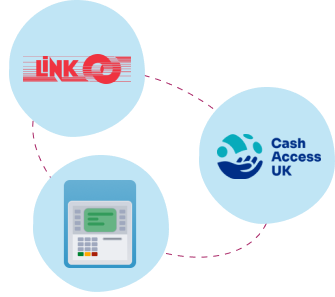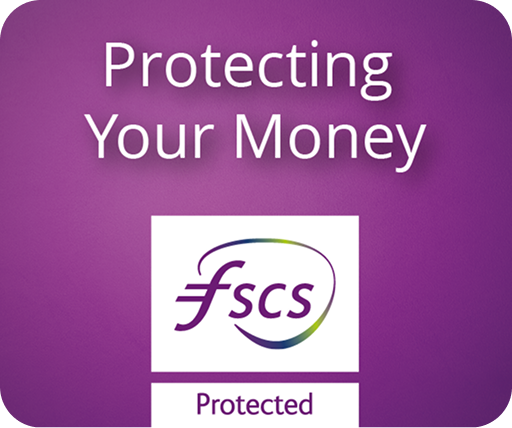Save for the short term, long term, for you, or your children. Whatever your goals are, compare our savings accounts to find the right one.

Cash ISAs
Earn tax-free interest on your savings
- Up to 3.44% Tax free/3.50% AER fixed (for an 18 Month Fixed Rate Cash ISA)
- Save up to £20,000 each tax year, and earn interest tax-free
Instant access
Dip into your savings whenever you need to
- Up to 5.00% gross/AER fixed for 12 months (for a Monthly Saver)
- Build your savings, and access it if you need to
Fixed rates
Save with a set interest rate for a fixed time
- Up to 3.55% gross/AER fixed (for a 1 Year Fixed Rate Bond)
- Save a lump sum at a fixed interest rate for your chosen amount of time
Save for a child
Put money aside for your child's future
- Up to 3.25% Tax Free/AER variable (for a Junior Cash ISA)
- Encourage children to start saving from a young age
You might be interested in...
Looking to invest?
We've teamed up with Wealthify to offer our customers a range of simple, affordable investment accounts.
ISAs in a nutshell
Find out what ISAs are, what makes them tax-efficient, who can open one, plus more.
Is your savings rate ending soon?
If you have a Fixed Rate Cash ISA or Fixed Bond savings account that’s coming to an end, then there are a few options that you can pick from.
Supporting access to cash
We partner with LINK and Cash Access UK to ensure our customers can easily access their cash.
Find the best way to withdraw cash
Use LINK's cash locator to find the best way to take cash out in your area.
Need better access in your community?
Find out about LINK and how they can improve access to cash in your community.

Savings account FAQs
Savings accounts are used to build up savings, either as a lump sum deposit or as a way of saving on a regular basis. The difference between a savings account and a current account is that savings accounts tend to pay a rate of interest which helps top up the money within the account.
By simply depositing cash into a savings account, it will start to accrue interest. Depending on the account, interest will be paid monthly, quarterly, or annually. Interest is calculated daily.
The ‘Base Rate’ is set by the Bank of England and is the interest rate that it charges on money lent to banks and building societies. They review it regularly and it can go up or down.
Whether your interest rate could be affected by a change to the Base Rate will depend on what type of savings account you have – fixed rate or variable rate.
Fixed rate accounts won’t be affected – your interest rate won’t change.
Variable rate accounts could be affected – your interest rate might change. That’s because we review the interest rates we offer on variable rate accounts regularly and the Base Rate is one of a number of things that we’ll take into account. So if the Base Rate changes, we could decide to change our savings rates. If we decide to lower your rate, we’ll tell you before this happens.
Please visit our savings rates page.
An ISA (Individual Savings Account) is a tax efficient way to save or invest. Unlike other savings accounts you don’t pay tax on money held in an ISA, regardless of your balance or how much income tax you pay.
Tax free means the interest paid will be free from UK Income Tax. The tax advantages depend on your individual circumstances and the tax treatment of your ISA may change in the future.
Since 6 April 2016, you have a Personal Savings Allowance, which means your interest is paid gross (without taking off tax).
The Personal Savings Allowance is £1,000 for basic rate tax payers and £500 for higher rate tax payers. Additional rate tax payers do not receive a Personal Savings Allowance.
If you earn more interest than the Personal Savings Allowance, you may have to pay additional tax yourself.
If your savings account can be held in joint names, you can add additional parties at your nearest branch. You'll both need to go into a branch so that you can provide proof of identity and address in person.
You can remove a joint account holder from a savings account by visiting us in branch or by booking a video call. Please bring along your account details and proof of identity.
Please visit our helpful information page to find out what you need to open an account.
View our guidance on how to top up an existing TSB Cash ISA.
Please refer to our close an account guide for further details on how to close.
Please visit our Save the Pennies page.
Please visit our inactive accounts page.
Please visit our compare accounts page.
If your savings account can be held in joint names, you can add additional parties at your nearest branch. You'll both need to go into a branch so that you can provide proof of identity and address in person. Visit our branch locator to find your local branch.
This is entirely your choice, and you can start saving from as little as £1.
Some savings accounts have limits, depending on the specific product. For further details, we suggest you review the individual summary boxes for each product.
The Financial Services Compensation Scheme (FSCS) protects up to £120,000 of your eligible money at TSB. For more information, please visit the FSCS website.
No, savings accounts are not credit scored in the same way as a current account and therefore you can have multiple savings accounts across multiple providers.
Depending on whether the base rate goes up or down, this can affect variable savings rates. We do offer products that have a fixed rate of interest which are Fixed Bonds and Fixed Rate Cash ISAs.
There are various ways/channels available to open a savings account, but each product has different conditions, so please review the product summary boxes for further details.
AER stands for annual equivalent rate, and this shows the percentage of interest the customer receives each year on their money.
You will typically pay tax on the interest earned, unless it is an ISA as ISAs are tax free. Interest is paid Gross (without taking off tax). Knowing how taxes affect the interest you earn on your savings is important. It's also helpful to learn about tax-free limits and accounts that can protect and grow your money. If you're a basic rate taxpayer, you can earn up to £1,000 tax-free with the Personal Savings Allowance. Higher rate taxpayers have a limit of £500.
Most people over the age of 16 can open a savings account themselves. However, with some youth products, like our Young Saver account, we do require a parent/guardian to open the account. Each product is different, so please review the terms and conditions of the product you are looking to open for further detail. For ISAs, you need to be over the age of 18 to open.
This is the amount of interest you can earn each year across all accounts aside from ISA related products and essentially it covers the interest you earn across all banks and building societies, not just TSB. The Personal Savings Allowance is £1,000 for basic rate taxpayers and £500 for higher rate taxpayers. Additional rate taxpayers don’t receive a Personal Savings Allowance.
Need any help?
Chat with us

Fastest
Use the TSB Mobile Banking App to get help with queries 24/7.
Give us a call
Lines open 8am - 8pm Monday to Sunday.
Visit us in branch
It’s easy for you to pop in and manage your finances.
Important Information
The Annual Equivalent Rate (AER) shows what the interest would be if the interest was paid and added to the account once each year. It lets you compare savings accounts easily. Gross rate means that credit interest is paid without income tax being deducted. Tax-free is the contractual rate of interest payable where interest is exempt from income tax. Tax treatment depends on your individual circumstances and may change.
You need to be 16+ and UK resident to open most of our savings accounts with the exception of Savings Pots and TSB ISAs. For children under 16 please see specific pages for opening procedures.





